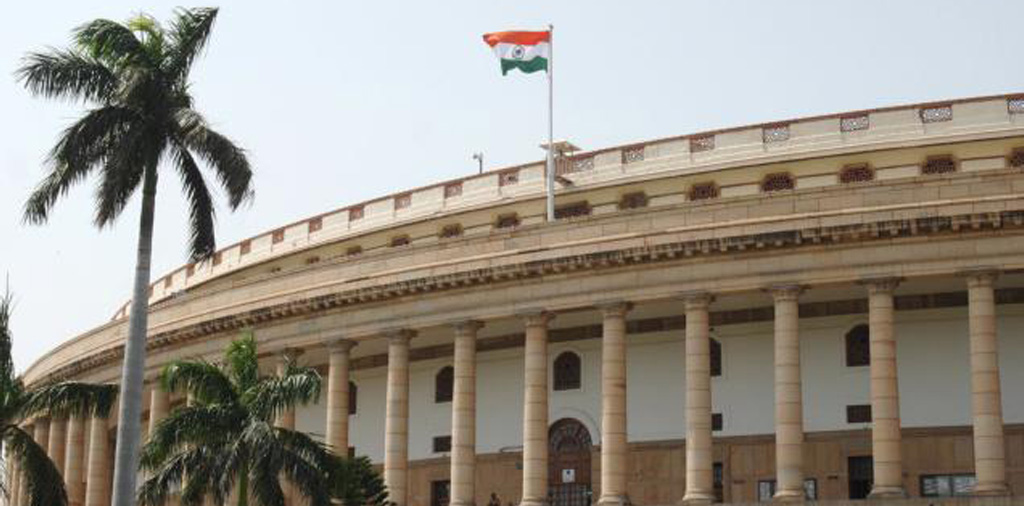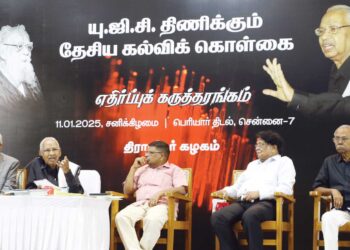 S. Rajaratnam
S. Rajaratnam
Prolific Writer and
Renowned Tax Consultant
From the tribal societies to a Nation State has been a long process of evolution. Human race divides itself on various grounds, whether it be religion, language, colour, caste, race, money or culture or any other differences, real or imaginary. Tribes or smaller organisations are either taken over or join with others to protect themselves. It is through a historical process, that transformation takes place.
Origin of federalism
History is replete with internecine hostilities between tribes and societies culminating in a State. The evolution has not been smooth except in rare cases. It has been achieved more through bloodshed than by mutual understanding. These differences are matters of history from biblical times. Jews considered themselves as the chosen people of god, but were subjected to mass extermination in the holocaust in Hitler’s Germany ultimately finding home in Israel. Bosnia is a recent example of the painful process of adjustment, so is the problems of the Tamils in Sri Lanka, though Chelva, the Tamil leader called his party a federal party offering federalism as a solution, which is evaded till date.
Federalism is a method by which reconciliation of the differences among the peoples is effected. Where a Unitary State is unable to solve its problems, a centrifugal force operates to split it. It also happens that a centripetal force brings peoples of different States to come together to form a single State, a federation or a confederation. The processes of both integration and disintegration are ever evolving.
Different kinds of federalism
Though federalism does offer a solution to bring together peoples of different outlook and culture under a common Government, it is not a simple solution. It has many variations with distribution of powers between the Centre and the States divergent as between them sometimes even from time to time. The assumption that there could be division of sovereignty between two Government is a facile one because sovereignty is incapable of being split up in any precise manner.
In U.S., different States peopled largely by immigrants from different parts of Europe did come together, but slavery became the issue of difference with civil war with the emergence of the present United States of America. U.S. Constitution is intended to balance the powers as between Centre or State, but the differences decided by adjudication of the Supreme Court. U.S. represents neither a weak Centre nor weak States.
The classification between the States, with strong Centres and those with strong States is more with reference to the importance of portfolios assigned to the Centre / States. The more important test is on which the residual powers are vested. Canada is an example of a Government, which has a strong Centre with assigned powers for its provinces and the residual powers with the Centre. The powers which can be concurrently exercised by both Centre and the State, is yet another test. In the same State, there could be asymmetrical federalism with some having wider powers as for example for Jammu and Kashmir in India. The division of powers under the Constitution is not final, because in actual practice, it may be diluted by party system depending upon whether the State and Centre are governed by the same party or different parties or by coalition(s).
Bicameralism by two Houses of Parliament, one to represent the States with each State having equal representation and other with representatives from country as a whole is a feature of federalism as in India with Rajya Sabha and Lok Sabha being two wings of the Parliament.
Countries with strong Centre apart from Canada and India are Australia, South Africa and Russia, though Russia has got a unique Constitution in contrast permitting secession of the States, which had brought calamity in the recent past with some States seceding leading to problems, which are yet to be finally resolved.
Federalism does not depend on the size of a country. Even a small country may have a constitution based on federal principle or may have to split further as it happened in Czechoslovakia and Yugoslavia, but very successful in Belgium or Switzerland. Smaller countries in Middle East, though have common religion failed to come together because not all groups were homogenous.
Where peoples cannot find expression for their goals in the State they live, there is discontent, instability, riots and civil war with terrorism as had been sponsored by the Islamic State functioning from Iraq. Terrorism has become a problem for most Governments, especially where there is no avenue of expression of discontent even in a functioning democracy.
There could be a limited relationship in a federation or a confederation on selective agenda. A successful example is one of European Union, which was prompted strangely from an appeal from Winston Churchill after the war in an oration in Zurich pleading for a common European State, but oddly England is out of the European Union because it felt it may lose its trade advantage with its Commonwealth relationship and sterling, its currency, as an international currency as against EURO. It is now having second thoughts on its decision. There is a strong movement to rope in non-European countries in European Union based more on economic considerations.
Regional understandings as by General Agreement for Trade and Tariff (GATT) is a milder attempt at such limited federalism. There is an attempt at regional co-operation but not amounting to federalism as between South American countries or countries in Africa, the Middle East and Far East. China with its large size and population, is a multi-national, multi-religious and multi-lingual country, but centrally controlled, but they are emerging signs of better recognition of regional interest.
History of federalism in India
India had numerous tiny kingdoms, though historically, there have been intermittent periods, where large parts of country were brought under one rule as under Mauryan Dynasty or even in Moghul times. India became one under the British rule, but for the separation of Pakistan, which later split with Bangladesh becoming a separate State.
India is now governed by the Indian Constitution spelling out the relationship between Centre and the States with residual powers with the Centre. There has been dilution of the federal principle because of the party system and frequent coalition Governments in the Centre and the States. The number of occasions when the Central Government could sack the Governments in the State indicates the concentration of the powers with the Centre.
Emergency, a power under the Constitution was used by the Prime Minister Indira Gandhi during which Fundamental Rights stood superseded. Emergency was a dark chapter in the history of Independent India.
Functioning of the Parliament continues to be woefully disorderly, so that the democracy has been practically non-functioning in India. One can do no better than repeat the words of Justice S.Ranganathan, a former judge of the Supreme Court in his book “Constitution of India – Five Decades (1950-1999)” published in 1999 with conditions being no different even after two decades after what he wrote in the book in following words:
“The Parliamentary system of governance, as in operation today, has developed, of late, a serious inadequacy which needs to be attended to at once. The reference is to the imperfect, inadequate and even cursory attention that the most important function of Parliament (viz. that of legislation) receives in practice. Parliament’s time is completely taken up by crucial controversies of the hour. This is no doubt inevitable and certainly Parliament is the proper forum where such controversies should be presented and debated. But these “discussions” very often become “battles” which render it impossible for Parliament to function in peaceful atmosphere. Many vital working hours, and even days, are lost in demonstrations, dharnas, protests, walk-outs and even fisticuffs. No doubt similar scenes are witnessed even in the Mother of Parliaments and upto a limit, are natural means of expression of viewpoints. However, this should gradually change and give way to a more orderly system by which opposing view points could be expressed.”
Erosion of powers of the States in India
One of the most regrettable features in the working of Indian Constitution is the gradual erosion of powers of the States, which in the long run would create more differences and dissatisfaction of peoples in the States, so as to require attention of our constitutional experts. It is true that the 42nd Amendment to the Constitution with all its faults brought about by Indira Gandhi Government in 1976 did provide for recognition of egalitarian social order by amendment to the Preamble envisioning social and economic democracy and the fundamental duties of the citizens to develop scientific temper, humanism and the spirit of enquiry and reform vide Article 51A(h) of the Constitution.
Prior to Constitution (42nd Amendment) Act, 1976, Entry 11 of the State List read “education including universities”, but this was diluted by substituting Entry 25 of the Concurrent List to read “education including technical education, medical education and universities, subject to the provisions of entries 63, 64, 65 and 66 of List I; vocational and technical training of labour”. This has been done with the purported object of “achieving economic goals through education” securing “integration” and the object of minimum disparities in the levels and standards of education as between various States.
This effect of shifting education from State jurisdiction to concurrent jurisdiction, is to deprive powers of the States by exercise of the concurrent power as was done for example to downgrade many Universities in the States. The recent withdrawal of stay by the Supreme Court against common entrance test for medical colleges in India is an undesirable outcome of this shift. Education should be more conveniently left to the States with different languages and culture. The recent activation of concurrent powers is a bad augury in the functioning of federal system.
A country like India with different languages, religions and cultures requires regions should enjoy a certain degree of independence consistent with its commitment to federalism. If not, the centrifugal process will undermine the unity of the country weakening the State, a situation which should be avoided.
Conclusion
A broad-based Commission should be appointed to revisit our Constitution to study the effect of its functioning and make recommendations, so that the Constitution would better reflect the needs of the times for the Centre, States and the local Governments (Panchayats) sharing powers in a fair manner, so that India’s potentials are best used for India’s growth and to realise the hopes and aspirations of its people to get due recognition in the comity of nations.








